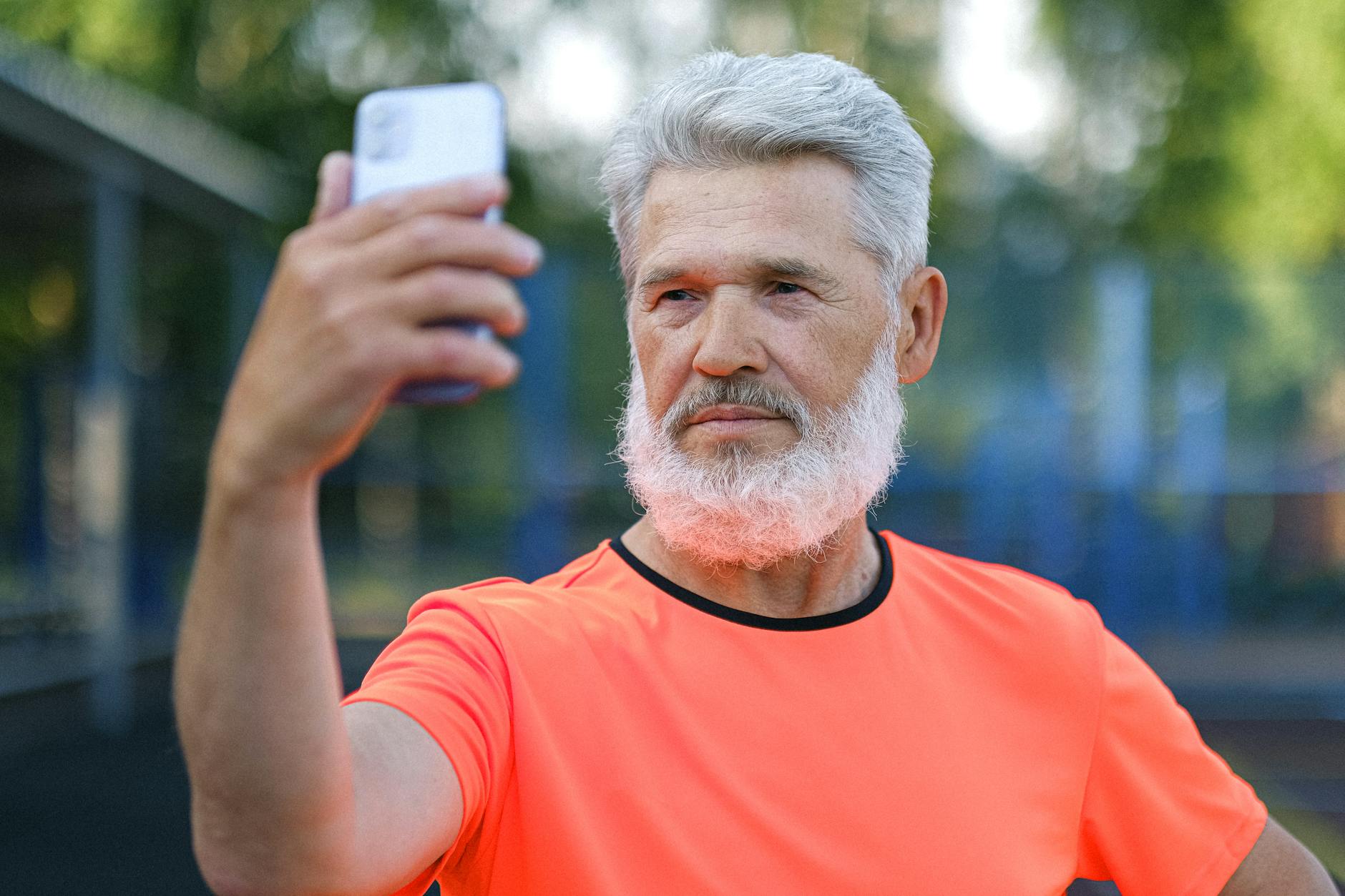Technology is more accessible than ever, offering great tools to express creativity, share experiences, and stay connected with loved ones. One such tool is the smartphone camera, which has revolutionized photography. Many think smartphone photography is only for younger generations. This guide aims to help seniors use smartphone photography, break age stereotypes, bridge generational gaps, and overcome tech barriers.

Mastering Smartphone Photography: Tips and Techniques
Smartphone photography provides an incredible platform for everyone to express their creativity and document their lives. With the rise of social media and photo-sharing platforms, anyone can now be a photographer. This democratization of photography is particularly empowering for seniors, who can use smartphone photography to capture moments, tell stories, and preserve memories, enriching their lives and maintaining a lively connection with the world around them.
Start Simple
Begin by familiarizing yourself with the basic functions of your smartphone camera. Here are some steps to help you get started:
- Explore Camera Settings: Learn about the different modes, such as portrait, landscape, and macro, and how to adjust settings like exposure, focus, and white balance.
- Practice Regularly: Take photos of everyday objects around your home. The more you practice, the more comfortable you will become.
To improve your photography skills, follow these tips:
Experiment with Angles:
- Try shooting from high above or low to the ground.
- Move around your subject to find the most interesting perspective.
Play with Lighting:
- Use natural light whenever possible.
- Experiment with shadows and highlights.
- Try shooting at different times of the day to see how the light changes.
Start Simple:
- Begin with straightforward subjects like flowers, food, or pets.
- Focus on framing and composition.
Gradually Increase Complexity:
- As your confidence grows, move on to more complex compositions.
- Try capturing dynamic scenes, like street photography or action shots.
By following these steps, you’ll develop a better understanding of your smartphone camera and improve your photography skills over time.
Use Editing Apps
Don’t be afraid to use editing apps to enhance your photos. Apps like Snapseed or VSCO are user-friendly and can significantly improve the quality of your pictures. Here are some key features and tips for using these apps:
- Brightness: Adjusting the brightness can help bring out details in shadows and highlights.
- Contrast: Increasing contrast can make your photos pop by emphasizing the difference between light and dark areas.
- Saturation: Enhancing saturation can make colors more vibrant and lively.
These apps often offer more advanced editing features, such as:
- Filters: Quickly change the mood or style of your photo with preset filters.
- Healing Brushes: Remove unwanted objects or blemishes with precision.
- Perspective Correction: Fix skewed lines or angles to create a more balanced image.
- Selective Adjustments: Make precise changes to specific areas of your photo without affecting the entire image.
By using these tools, you can transform a standard photo into a professional-looking image with minimal effort. Don’t hesitate to experiment with different settings to find what best enhances your pictures.
Master Composition Techniques
Composition is key to turning a good photograph into a great one. Here’s how you can enhance your photography skills with some essential techniques:
- Rule of Thirds
- Definition: This involves dividing your frame into a 3×3 grid.
- Application: Place the main subject along these lines or at their intersections.
- Benefit: This technique often results in more balanced and engaging photos.
- Leading Lines
- Examples: Roads, pathways, rivers, or any lines that guide the viewer’s eye.
- Purpose: They draw the viewer’s attention into the picture and towards the main subject.
- Effect: Adds depth and directs focus within the image.
- Background Considerations
- Uncluttered Background: Keep the background simple and free from distractions.
- Focus on Subject: An uncluttered background helps the subject stand out.
- Techniques: Use a shallow depth of field to blur the background or position your subject in front of a plain backdrop.
By incorporating these techniques, you can create more compelling and visually appealing photographs. Experiment and practice regularly to see improvement in your composition skills!
Focus and Exposure
Many smartphones allow you to manually adjust focus and exposure by tapping on the screen. Here’s how you can make the most out of these features:
- Tap to Focus:
- Tap on the main subject of your photo to ensure it’s in sharp focus.
- This ensures the camera prioritizes the subject you want to highlight.
- Automatic Exposure Adjustment:
- Most cameras will automatically adjust the exposure once focus is set.
- This balances the light to make sure your subject is properly lit.
- Manual Exposure Control:
- Some smartphones let you slide your finger up or down on the screen to manually tweak the brightness.
- This is useful in challenging lighting conditions.
- Specific Scenarios:
- Bright Sunlight: Adjust exposure to avoid overexposure.
- Low Light Settings: Increase exposure to brighten the photo.
- Advanced Tips:
- Experiment with different focus and exposure settings to see what works best in various conditions.
- Practice makes perfect – the more you experiment, the better your photos will be.
By understanding and using these manual adjustments, you can significantly improve the quality of your smartphone photography.
Utilize Natural Light
Lighting is one of the most crucial elements in photography. Natural light, especially during the golden hours just after sunrise and just before sunset, can add a beautiful warmth and softness to your photos. Keep Your Lens Clean
To make the most out of natural light:
- Golden Hours: These are the first hour after sunrise and the last hour before sunset. The light during these times is softer and warmer, providing a flattering glow.
- Avoid Built-in Flash: Using the built-in flash can create harsh shadows and wash out colors. Instead, try alternative light sources.
- Move Closer to a Window: Indoor photographers can benefit from the natural light coming through windows, which is usually softer than artificial lighting.
- Go Outside: Natural light, especially in the early morning or late afternoon, tends to be more diffused and less harsh than midday sun.
Additional Tips:
- Overcast Days: Don’t shy away from cloudy days; the clouds act as a natural diffuser, providing even lighting and reducing harsh shadows.
- Reflectors: Use reflectors to bounce light back onto your subject, filling in shadows and creating a more balanced exposure.
- Backlighting: Try positioning your subject so the light is behind them, creating a halo effect and adding depth to your photos.
By understanding and utilizing natural light effectively, you can significantly enhance the quality of your photographs.
It might seem obvious, but a clean lens is essential for clear photos. Our smartphones often reside in pockets, purses, or bags, accumulating dust and fingerprints. Regularly clean the lens with a soft, lint-free cloth to ensure your pictures come out sharp and vibrant. A dirty lens can result in blurry images and unwanted glare, affecting the overall quality of your photos.
Experiment and Enjoy
The most important part of improving your smartphone photography skills is to enjoy the creative process. Experiment with different settings, subjects, and techniques. The more you play around with your smartphone camera, the better you will become at capturing the world around you. Remember, photography is not just about technical skills but also about expressing your unique perspective and creativity.
By mastering these simple techniques, anyone can significantly improve their smartphone photography skills. The accessible nature of smartphone photography allows for endless opportunities to learn and grow as a photographer, making it a fulfilling and enjoyable hobby.

Breaking Age Stereotypes
Age should never be a barrier to learning new skills or following passions. Seniors can excel in smartphone photography, bringing unique perspectives that challenge common perceptions of aging. By capturing the world through their lens, seniors can showcase their creativity and talent, proving that photography is an art form open to everyone, regardless of age.
Join Photography Communities
Joining online photography communities or local clubs can provide a platform to share your work and receive feedback. It’s also an excellent opportunity to learn from others and stay inspired.
Participate in Challenges
Engage in photo challenges or contests specifically designed for smartphone photography for seniors. These activities can push you to think outside the box and improve your skills.
Bridging Generational Gaps
Smartphone photography is a fantastic way for seniors to engage with younger generations. Sharing photos on social media or collaborating on photography projects can foster meaningful interactions and mutual understanding. It’s a shared hobby that can bring families closer together and create lasting memories.
Share Your Stories
Use your photos to tell stories from your past. Share these stories with your grandchildren or younger friends. It’s a wonderful way for them to learn about your experiences and for you to connect on a deeper level.
Collaborate on Projects
Work on joint photography projects with younger family members. Whether it’s a photo album of family events or a creative photo essay, collaborating can be a fun and rewarding experience for both parties.

Overcoming Technological Barriers
The thought of mastering smartphone photography might feel overwhelming, but with the right guidance and practice, it’s entirely achievable. Here are some practical tips to help seniors navigate the world of smartphone photography with confidence.
Take Advantage of Tutorials
Many smartphones come with built-in tutorials and tips for using the camera. Additionally, there are countless online resources, including video tutorials, blogs, and courses, that can provide step-by-step instructions.
Invest in Basic Accessories
Consider investing in some basic accessories like a tripod for stability or a clip-on lens for more versatility. These tools can enhance your photography experience without breaking the bank.
Keep Your Phone Updated
Ensure your smartphone is updated with the latest software. Updates often include improvements to the camera and its features, as well as enhanced security.
Let’s take that photo!
Smartphone photography for seniors is more than just a hobby. It’s a means of empowerment, a way to break age-related stereotypes, and a bridge connecting generations. By embracing this technology, seniors can enhance their creativity, engage in meaningful interactions, and stay connected with their loved ones.
Remember, the key to mastering smartphone photography is practice, patience, and a willingness to explore. Start simple, join communities, collaborate on projects, and never hesitate to seek out resources and tutorials to improve your skills.
Photography is a language that transcends age, and with your smartphone in hand, there’s no limit to the stories you can tell and the connections you can make. So, grab your phone, start snapping, and let your unique perspective shine!
For those interested in diving deeper into the world of smartphone photography for seniors, consider signing up for workshops or classes that offer hands-on experience and personalized guidance.





